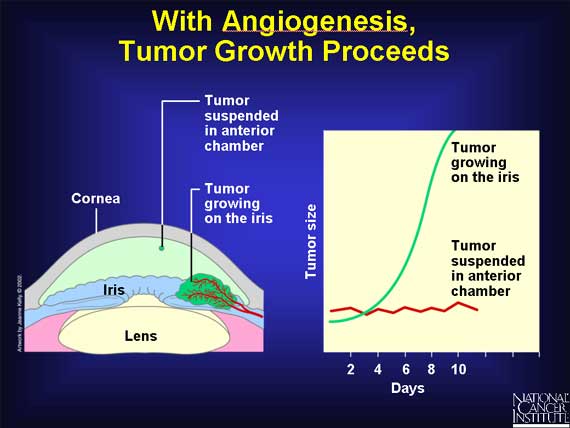|
In another experiment designed to find out whether cancer growth can continue when angiogenesis occurs, researchers compared the behavior of cancer cells in two regions of the same organ. Both locations in the eye had nutrients available, but only one could support angiogenesis. Scientists found that the same starting injection of cancer cells grew to 1-2mm in diameter and then stopped in the region without nearby blood vessels, but grew well beyond 2 mm when placed in the area where angiogenesis was possible. With angiogenesis, tumor growth continued.

< Previous | Index | Next Slide > |